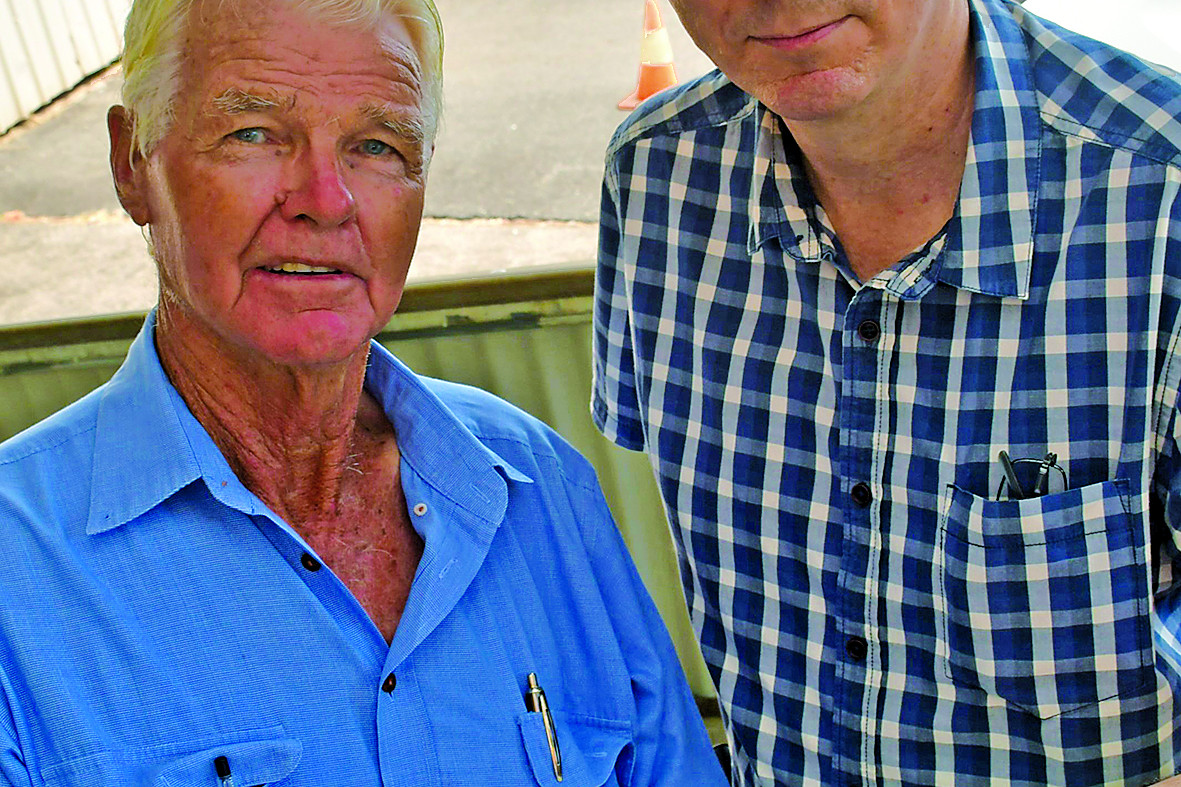Community & Business
21 April, 2021
Sustainable water plan needed for Tablelands
FARMERS in the Barron River catchment have combined during recent weeks to appeal to government for more water and continued legislation to keep out the sharks, combined with water security and a presence during the development process of the new water plan.

BY SALLY TURLEY
FARMERS in the Barron River catchment have combined during recent weeks to appeal to government for more water and continued legislation to keep out the sharks, combined with water security and a presence during the development process of the new water plan.
Around 50 farmers gathered in Atherton recently to listen to Acting Manager Water Planning from the Department of Regional Development, Manufacturing and Water (DRDMW), Patrick Huber and assistant, Kira Hinton-Tingay speak on the development of a replacement for the 2002 Barron water plan which expires on December l9, 2022.
With the cutoff date for submissions to the Proposed replacement of the Water Plan (Barron) 2002 - S44 of the Water Act 2000 closing last Friday, farmers in the area have been united and consistent in their message to DRDMW.
"Water is everything and without it we have nothing," third generation dairy farmer and potato grower, Frank Cuda told The Express.
"Farmers are being asked to produce more and more and the crop base across the Tablelands keeps expanding. The pressure on us to keep putting food on a lot of tables keeps growing and more water must be made available," he said.
"Tinaroo Dam is already down to 78% and dropping. The current system is at its limits and they are not issuing any more allocations. We could be on water restrictions from day one. Reliability of supply is so important, but we are always living on the edge, looking for help from the skies. The government needs to look at alternatives like channeling high flow water out of the Johnstone River into Tinaroo dam to supplement supply. There are very few irrigators on the Johnstone and most of the water accumulated throughout its 2,320 sq km catchment area is just emptying into the Coral Sea," he said.
Keeping out water dealing by landless corporates was equally important to farmers. Meeting organiser, Case Schoorl said, when water packages were released in Southern Queensland, allocations were snapped up by cashed up, non-farming investors who then dealt water back to farmers at exorbitant prices.
Farmers were forced to go to these dealers and buy water from them on a 'take it or leave it basis,' just so they could keep operating.
The Government could be sympathetic to this process as they received a percentage of the transaction every time water was dealt.
Local cane and potato grower, David Nix said the current Barron Water Committee fought long and hard to ensure that only people who owned land in the area were allowed to buy water.
"So many farmers have had to mortgage their water entitlements to their banks and those entitlements were pivotal to their financial security as well as security of production. Losing those water rights could even result in bank foreclosures," he said.
Mr Nix raised the idea of a water register for inclusion in the new plan. With water supply so tight and the need for many farmers to double crop to survive financially, they often needed to embark on seasonal trading to get them through.
He said having a list of what water was available for purchase would speed up that process. Other issues of concern to producers included the cutting of water allocations throughout the growing season.
Once a crop is in the ground or the cattle are in the paddock, the economic commitment to that project has already been made by farmers.
Growers requested a longer lead in time be provided to them by the department before water restrictions were enforced, allowing them a better opportunity to manage the water they had to maximise annual growth and production.
Agricultural representation through the formation of an advisory body to work alongside the department during the preparation of a replacement plan was also high on farmers' wish-list.
"Development of plans such as these is a complex and convoluted process" Mr Schoorl said.
"The finalisation of the 2002 plan, estimated to take 18 months to 2 years ended up blowing out to a 14 year process and while the department has been good to work with historically, if we do not get involved, they will have a free run," he said.
"I received a total of 10 submissions from farmers affected by the plan and delivered them into the hands of the department staff last Friday.
Once those submissions have been read, I believe DRDMW will call for the formation of an advisory group and then the process will begin in earnest."
For decades farmers have relied on Tinaroo Dam for their water. Completed in 1959, the dam impounds 75% of the volume of Sydney Harbour, or 438,919 megalitres at 100% capacity, has a maximum depth of 41.8m and a spillway capacity of 1,160 cubic metres per second.
It was designed over 60 years ago for water storage and to supply irrigation to 9000ha of farmland,' but by 2015, over 59,000ha or 28% of the catchment was being used for agriculture.
Some 415 square kilometres of that area was farmland irrigated from the extensive 176km network of channels, dwarfing the original area planned for by over four and a half times.
Tinaroo Dam also provides drinking water to the townships of Tinaroo, Walkamin, Mareeba, Kuranda, Mutchilba, Dimbulah and Yungaburra.
The population has almost doubled across the region growing from around 23,000 people in 1966 to around 45,000 in the 2011 census.
If we are to maintain our enviable reputation as the 'food bowl of Queensland's far north,' the formation of a plan that ensures a sustainable platform for horticulture, while catering to the region's continued growth in population and eco-tourism is what is required from this new water plan.



